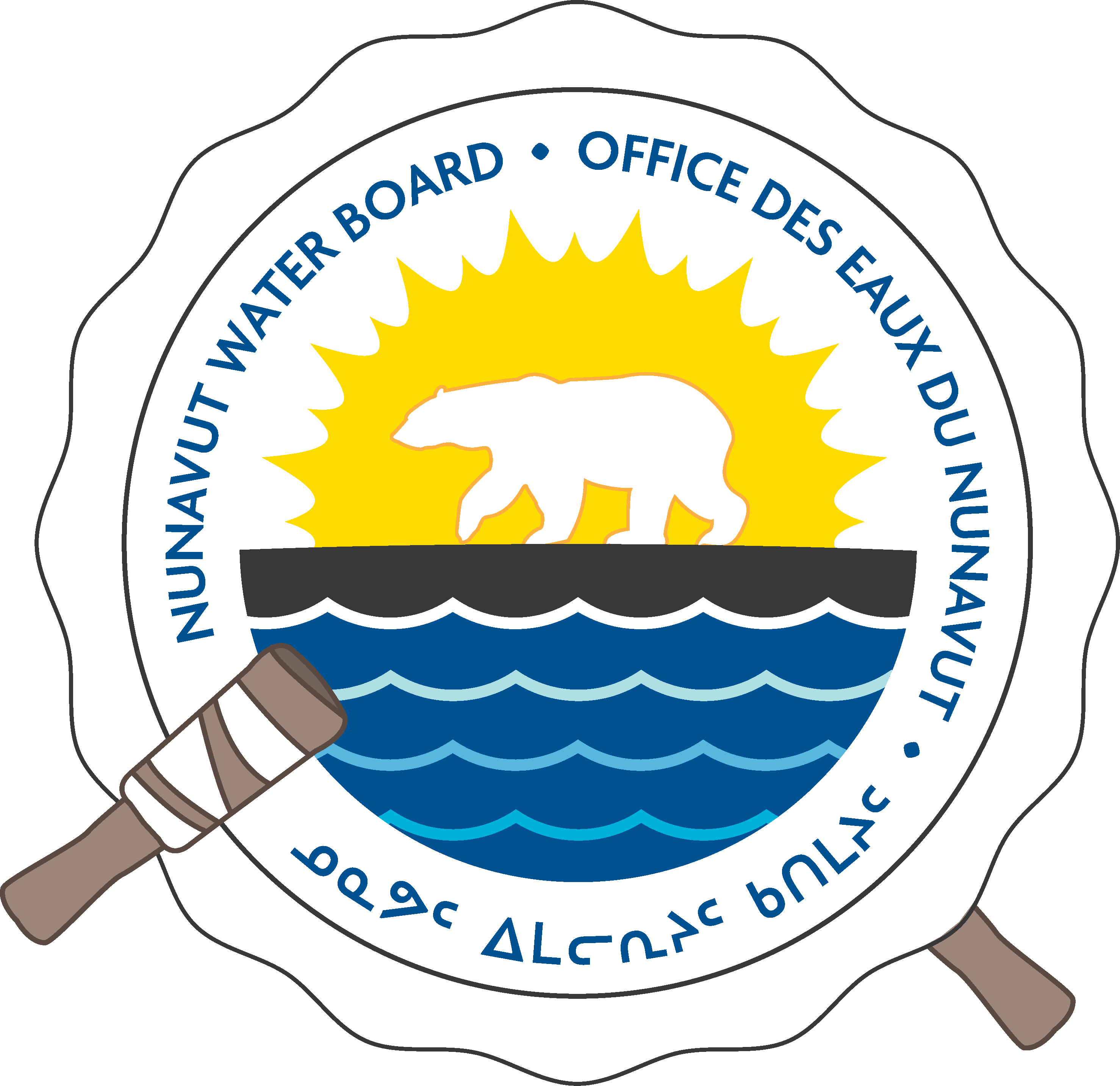Roles and Responsibilities
The following lists some of the main roles and responsibilities of some of the main stakeholder involved in the licensing process:
- Nunavut Water Board
- Proponent / Applicant
- Public
- Designated Inuit Organization (DIO)
- Nunavut Impact Review Board (NIRB)
- Nunavut Planning Commission (NPC)
- Minister @ Aboriginal Affairs and Northern Development Canada (AANDC)
- Inspector @ Aboriginal Affairs and Northern Development Canada (AANDC)
Nunavut Water Board (top)
- Determine whether applications received by the Board for undertakings and activities are administratively and technically complete to the extent that the Board can commence the licensing process.
- Confirm the type of authorizations that should be issued (approvals without a licence, Type “B” or Type “A” Licence) for applications related to activities and undertakings associated with projects.
- Determine whether public hearings are required for applications.
- Provide public notice of applications and related correspondence.
- Solicit comments and recommendations from interested parties and persons as determined throughout the public review period for applications.
- Consider, where appropriate, the comments and recommendations that have been provided by interested parties and persons during the various stages of the review process for applications.
- Incorporate relevant recommendations, where appropriate, into decisions related to authorizations that the Board issues.
- Foster alternative dispute resolution mechanism, where and when justified, to resolve water compensation issues between proponent and respective DIOs.
- Issue timely decisions on various applications that are before the Board.
- Seek the Minister’s approval for the issuance of Type "A" licences issued by the Board.
Proponent / Applicant (top)
- File complete applications and supporting information with the Board for undertakings or activities being considered for particular projects.
- Address in a timely manner all information requirements identified by the Board and intervening parties prior to, during, and after the public review period for applications before the Board.
- Participate fully in the public review process for all undertakings and activities associated with relevant projects.
- Work cooperatively with stakeholders to resolve outstanding issues expeditiously when possible.
- Abide by the terms and conditions of all authorization issued by the Board for particular undertakings and activities associated with projects.
Public (top)
(Public includes Interveners, Youth groups, Women Groups, HTO, Hamlet, etc.)
- Participate fully in the public review process for applications that are before the Board.
- Provide to the Board comments and recommendations relevant to issues identified during the review process for applications.
- Adhere to predetermined timelines and deadlines set and outlined for applications under review by the Board.
- Work cooperatively with stakeholders to expeditiously resolve outstanding issues identified during the public review period for applications while keeping the Board regularly informed of resolved and outstanding issues.
Designated Inuit Organization (DIO) (top)
- Participate fully in the review process for applications distributed publicly by the Board for review.
- Identify concerns and issues relevant to the DIO in the particular region (Kitikmeot, Kivalliq, and Qikiqtani) in which the undertaking or activity would be carried out.
- Complete any water compensation agreement with the proponent, preferable in advance of a public hearing or board decision for undertakings related to particular projects.
- Inform the Board in a timely manner of any water compensation agreement secured with the Proponents for projects under review by the Board.
Nunavut Impact Review Board (NIRB) (top)
- Screen project proposals in order to determine whether or not a review is required.
- Gauge and define the extent of the regional impacts of a project, such definition to be taken into account by the Minister in making his or her determination as to the regional interest.
- Review the ecosystemic and socio-economic impacts of project proposals.
- Determine, on the basis of its review, whether project proposals should proceed, and if so, under what terms and conditions, and then report its determination to the Minister; in addition, NIRB’s determination with respect to socio-economic impacts unrelated to ecosystemic impacts shall be treated as recommendations to the minister.
- Monitor the project in accordance with the provision of Part 7.
Nunavut Planning Commission (NPC) (top)
- Identify Planning Regions.
- Monitor project to ensure that they are in conformity with land use plans.
- Identify specific planning objectives, goals and variables that apply to planning regions and are consistent with the broader objectives and goals.
Minister @ Aboriginal Affairs and Northern Development Canada (AANDC) (top)
- Make decisions on whether to approve the issuance, amendment, renewal or cancellation of Type “A” licences or Type “B” licences for which public hearings are held.
- Determine form in which financial security is held by AANDC in accordance with relevant terms and conditions in licences issued by the NWB.
Inspector @ Aboriginal Affairs and Northern Development Canada (AANDC) (top)
- Enforce the terms and conditions of all authorizations issued by the NWB.
- Inspect works associated with undertakings and infrastructure for projects licensed by the NWB.
- Advise the Minister or the Board of any direction given in accordance with section 87(1) of the Nunavut Waters and Nunavut Surface Rights Tribunal Act, S.C. 2002, c. 10.
- Determine licence compliance with respect to standards prescribed in the regulations or imposed by licences.

